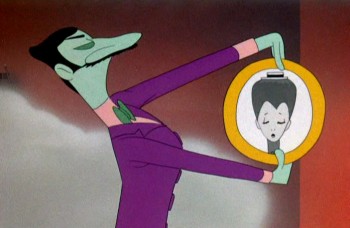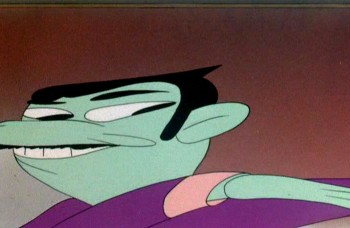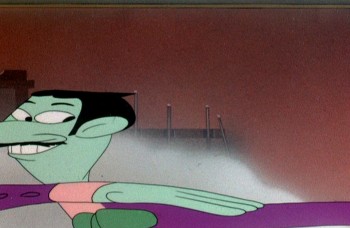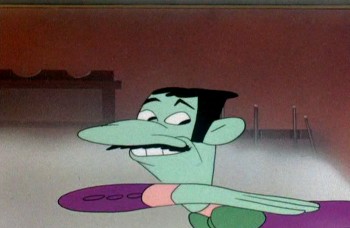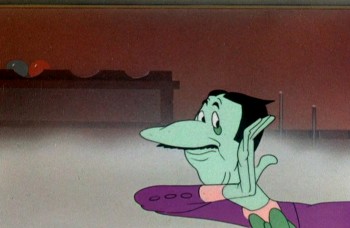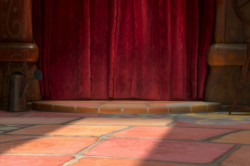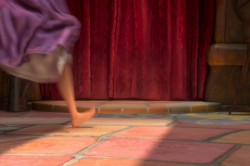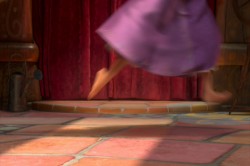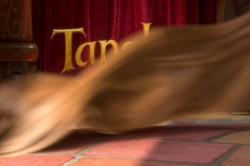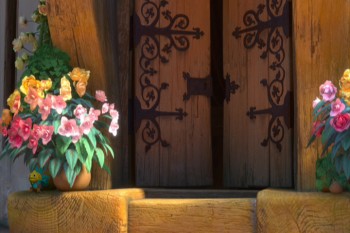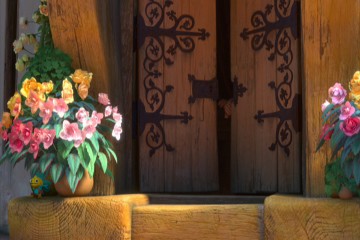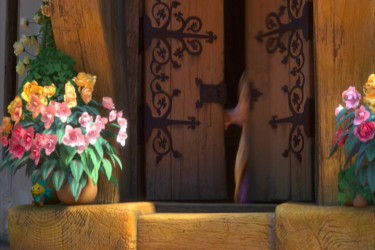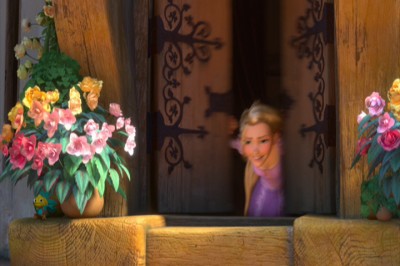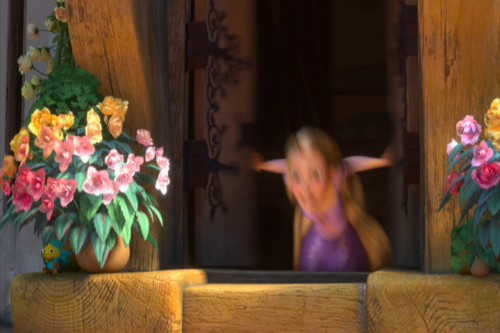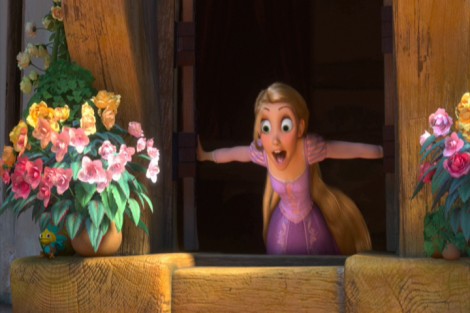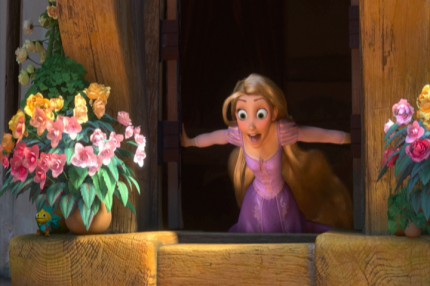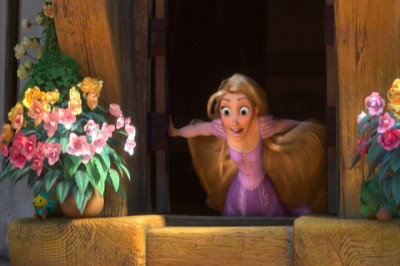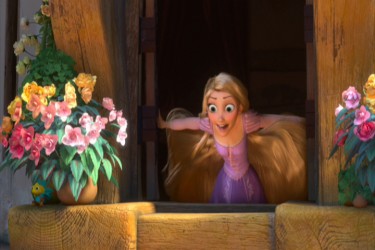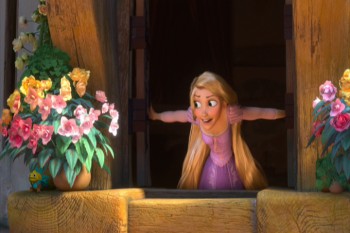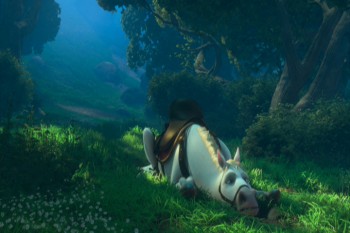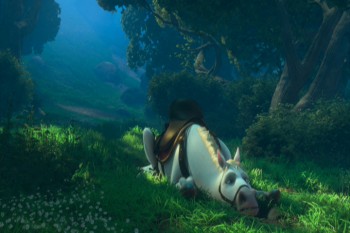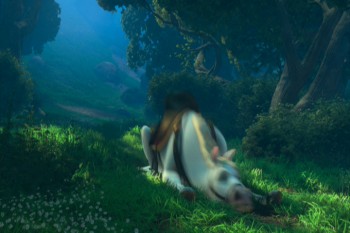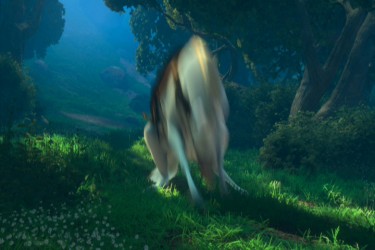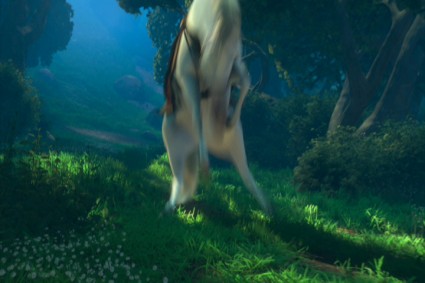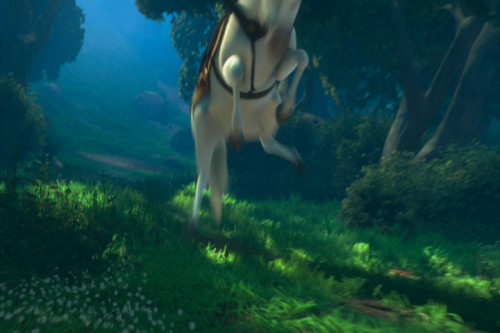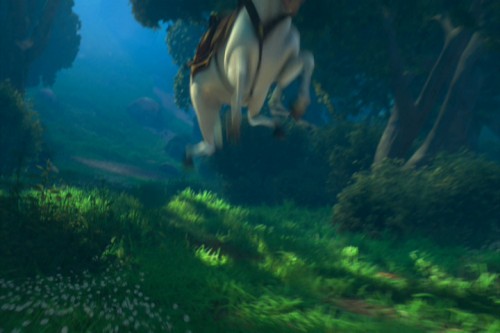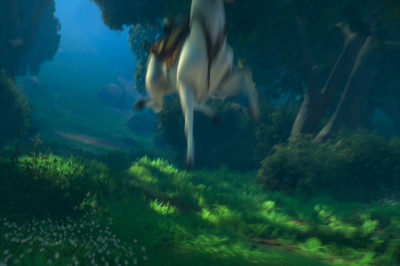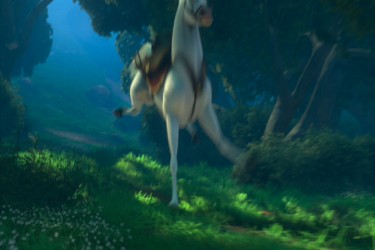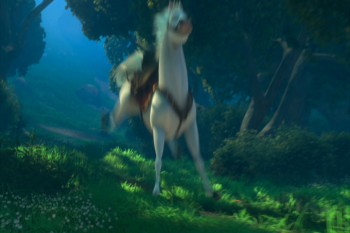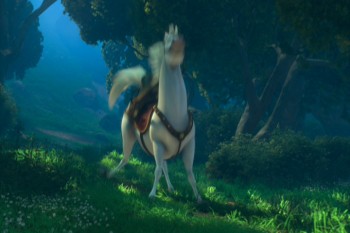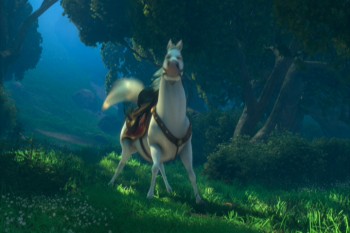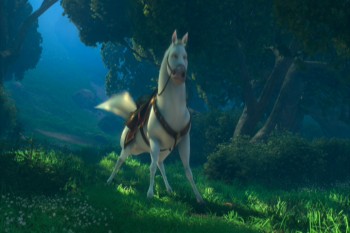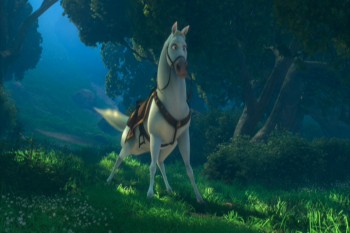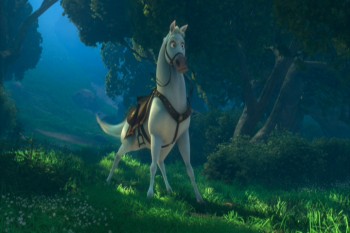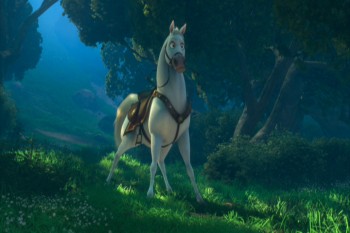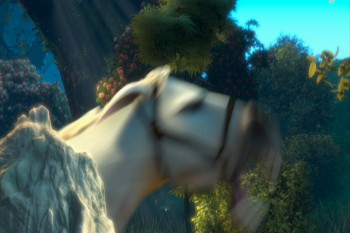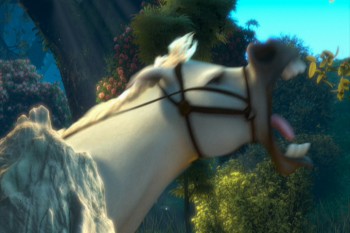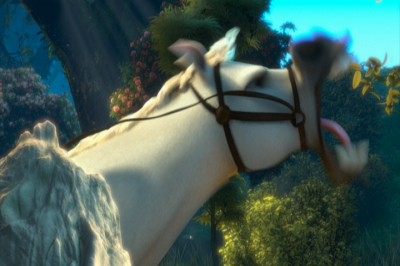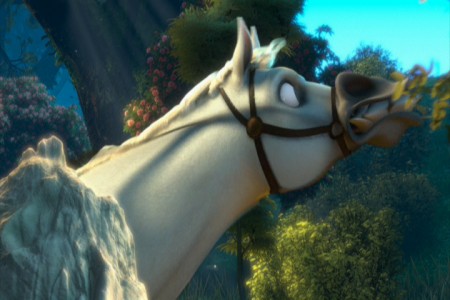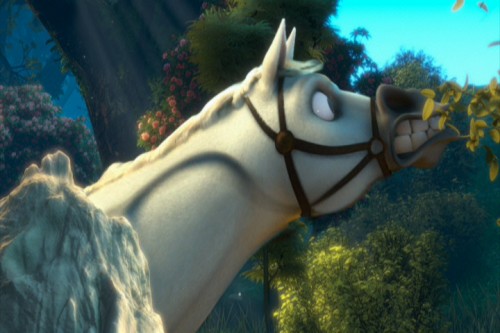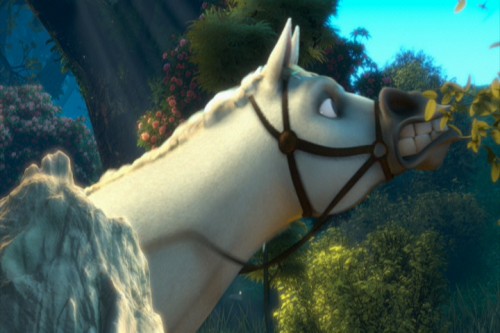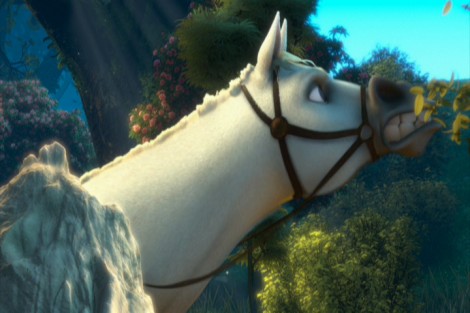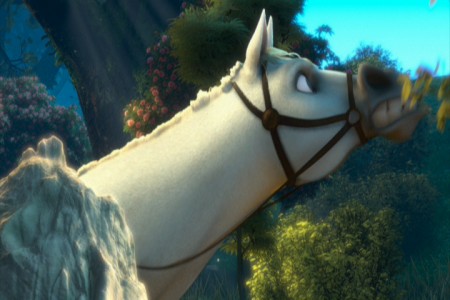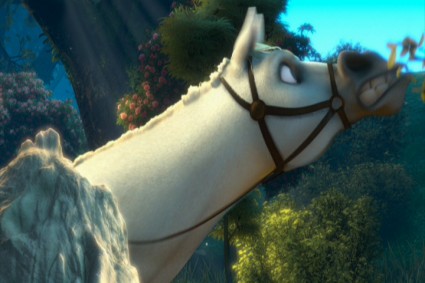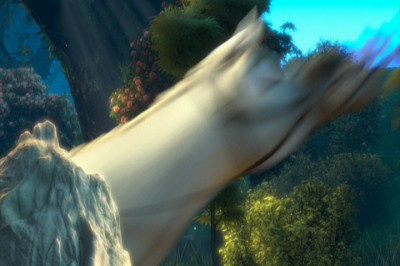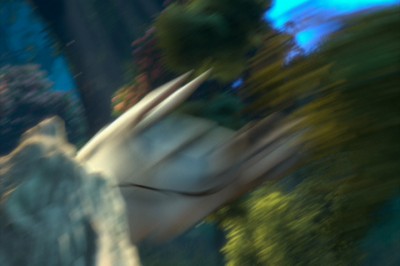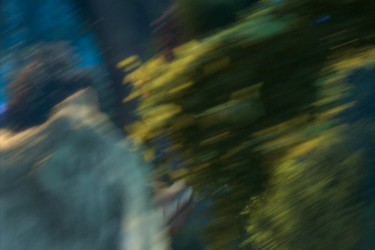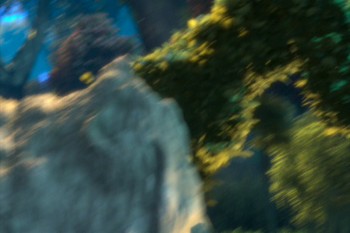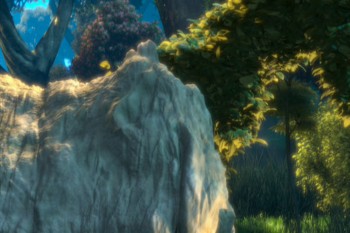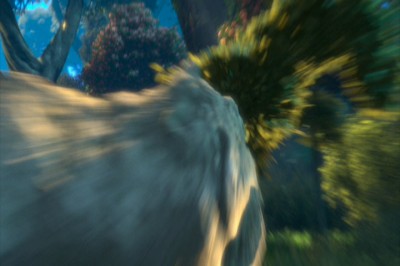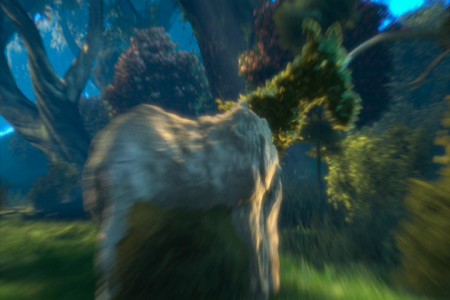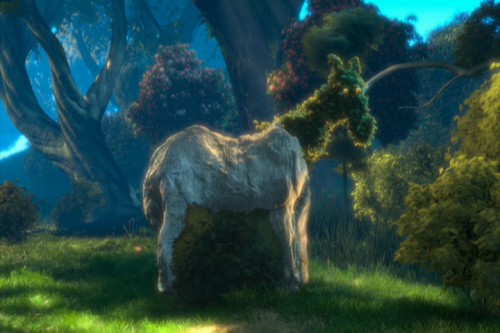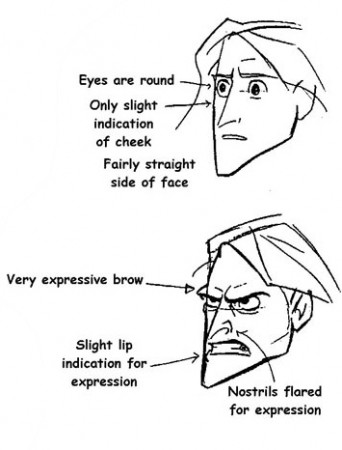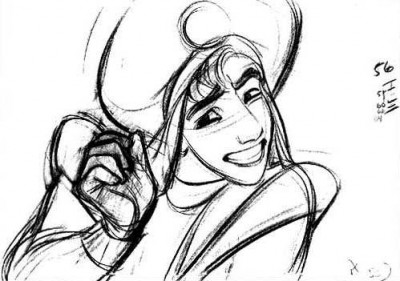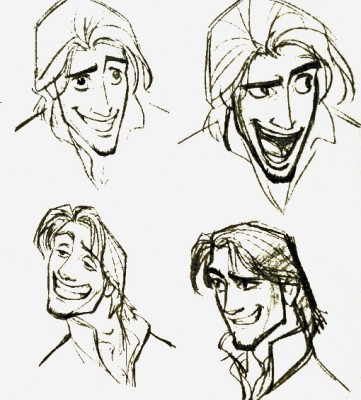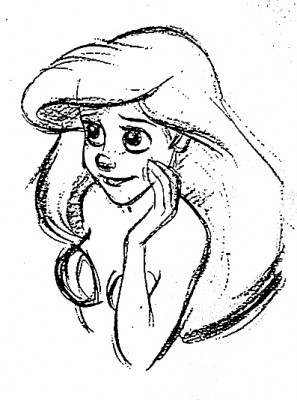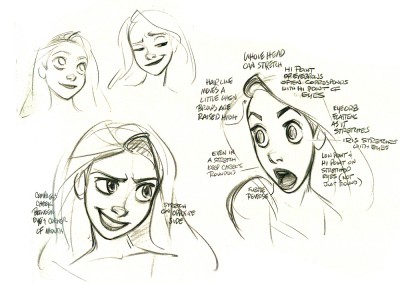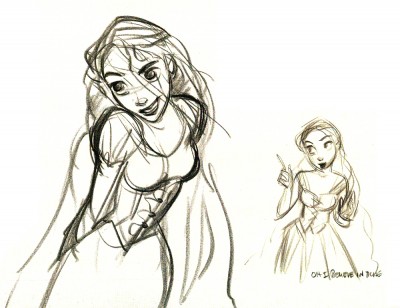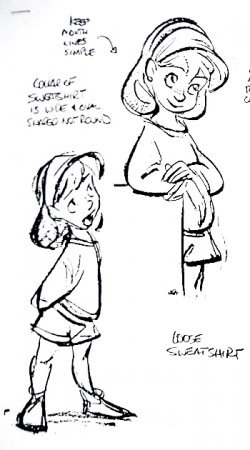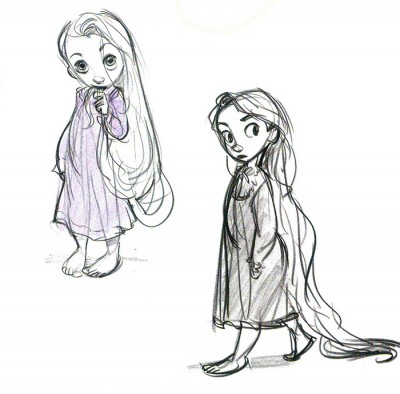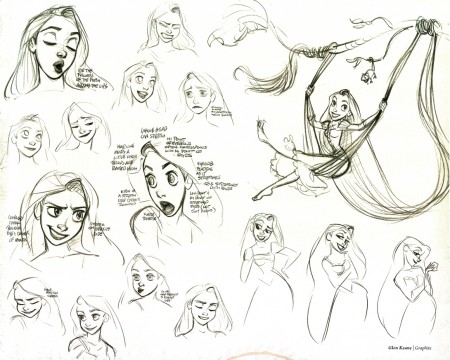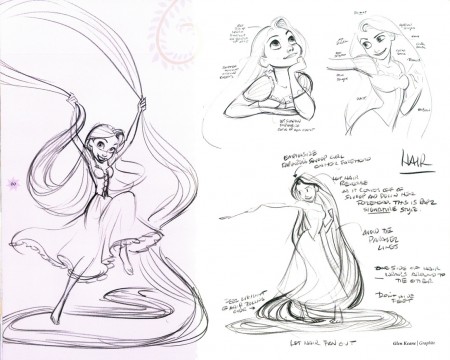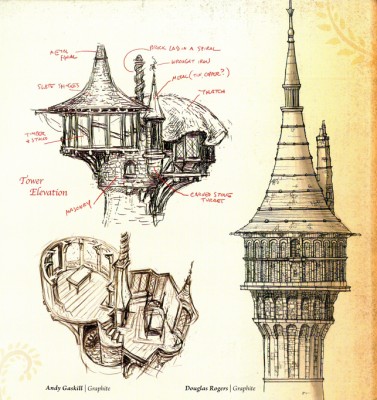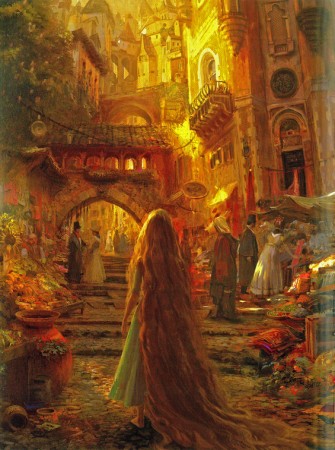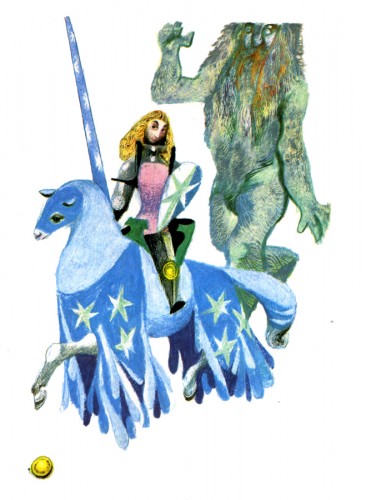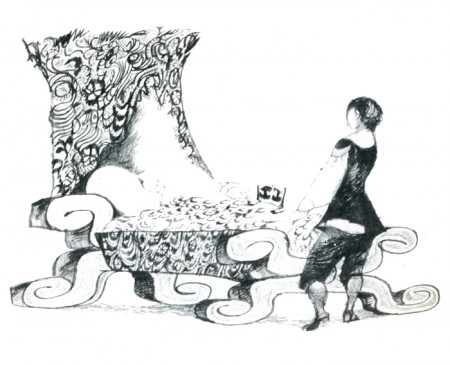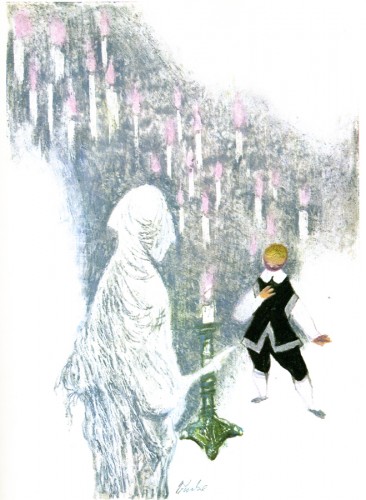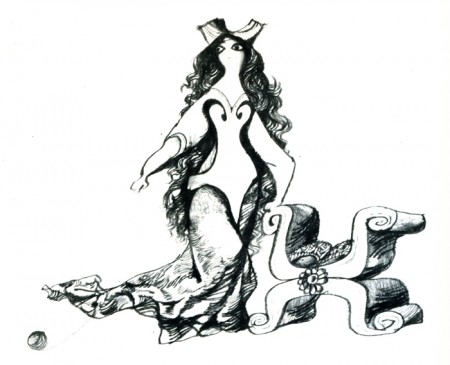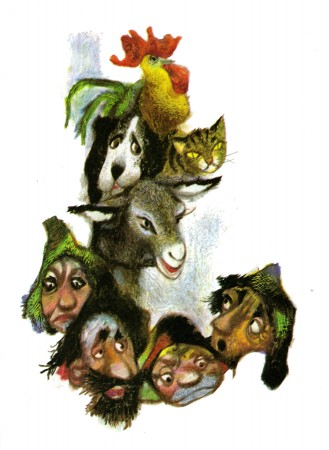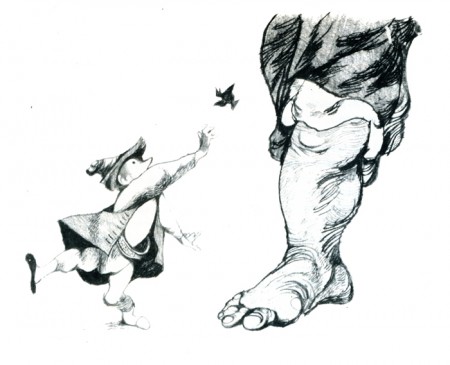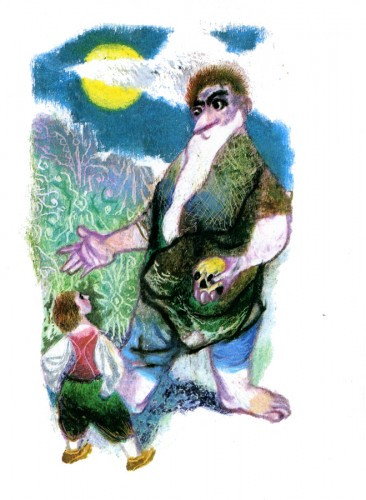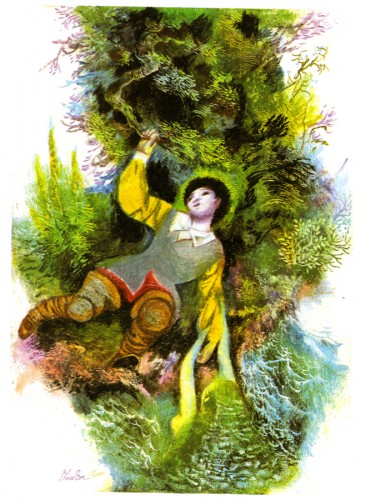Search ResultsFor "rapunzel"
Commentary 29 Oct 2013 11:46 pm
Frozen Films
I apologize. I’m getting older and animation has turned from its simple little roots of magic. From those simple glories to where the one blow hard driving the car can cause such difficulties. But the response couldn’t have been – not for Mickey, Donald, Goofy, or the nephews – it couldn’t have been to react with an automatic aid button from the very unwacky world of 3D computer animation. That’s not even “Deux Ex Machina” that’s “Cartoonist ex machina”. (Aid from above, anyone.)
OK,it’s been done once, now what? Having Bugs torture Daffy is one thing; saving the day is another.
And what about FROZEN? Everything seems to have some kind of magical spell to save the day. Push hair away from eyebrows, close your eyes real tight and say “Magic words of Poof Poof Piffles; make me just as small as sniffles.” Wallah! You’re tiny too, and can do what ever you up to doing.
Sometimes the calico remains on your body sometimes it doesn’t. How are you really textured?
Or are you just some chamois piece of material that’ll make right with the world.
Does anyone get the point? There can be no danger if it all just happens and then comes undone. You see, Everything has to have rules . . . everything, or there is no danger. And then, what’s the point?
Goofy and Donald and Mickey can jump into the world where things are browner, blacker or yellower, even more purple. And they can’t wash away their thought sm – not so easily, at least, had they had their way Mr. Boehner or Mr. Cruze or even Mr. Obama.
Let’s think about the things we’re showing our kids. Magical worlds in twisters … OK. Worlds where real hate and hurt abound, let’s think a bit about it. OK?
Now the film begins.
Anything with Bugs, Mickey or Daffy can’t be too bad -
You can pretty well believe in that theorem.
CARS 2 bottom to the lowest.
MONSTER UNIVERSITY – OK it’s just middling fantasy)
WRECK IT RALPH – No need, Thanks. Someone’s just out to make bucks
Should I go on?
Can't we make our lives and our literature of some value?
Elliot, I was sick all weekend. So what else is new these days? I can handle it,
and if it means seeing ONLY YESTERDAY or The RISEN WIND.
Watch what they watch and if you can’t take it, stop them.
Friday is a good day for Johnson’s muck ups.
We have to take notice.
We have to be aware.
Commentary &Independent Animation 03 Mar 2012 06:11 am
More Crits, Quips and Cracks
- Last week I wrote about my reading Andrew Osmond‘s BFI monograph for the film Spirited Away. I quite enjoyed the short book and immediately read through it twice. Of course, I also enjoy Miyazaki’s film Spirited Away, so I had a lot to visit in the read.
In the rear of the book, there are notes and references for further reading. One of these was a commentary article by Michael Barrier which is still posted on his site, about Monsters Inc. and Pixar’s animation as well as mention of a couple of Miyazaki films, Princess Mononkone and Spirited Away.
My first thought on going back and rereading Mike’s article was in how much the comment and material holds up over the years. There’s some very specific arguments being made about the animation of all the films mentioned, and I can’t take issue with much of what he has to say.
I’d like to quote a few paragraphs from this article:
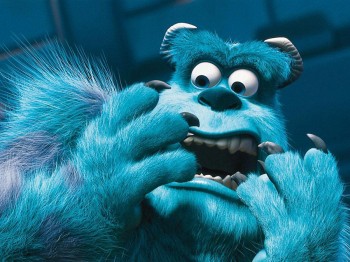 Computer animation’s technology has from all appearances advanced at an even faster rate than the techniques of the Disney animators in the thirties. It’s becoming clear, though, that, in contrast to what happened seventy years ago, there’s no necessary connection between mastering the technology and putting more convincing characters on the screen. When a character is covered with millions of precisely rendered hairs, and his on-screen environment is richly three-dimensional, it’s reasonable to expect him to move with a real creature’s subtlety. Sulley does not pass that test. He is less persuasive than many drawn characters whose caricatured movements are simpler and more direct. It is Sulley’s voice (by John Goodman) that brings him to life, far more than the animation; in that respect, the Pixar characters are indistinguishable from Homer Simpson or, for that matter, Huckleberry Hound.
Computer animation’s technology has from all appearances advanced at an even faster rate than the techniques of the Disney animators in the thirties. It’s becoming clear, though, that, in contrast to what happened seventy years ago, there’s no necessary connection between mastering the technology and putting more convincing characters on the screen. When a character is covered with millions of precisely rendered hairs, and his on-screen environment is richly three-dimensional, it’s reasonable to expect him to move with a real creature’s subtlety. Sulley does not pass that test. He is less persuasive than many drawn characters whose caricatured movements are simpler and more direct. It is Sulley’s voice (by John Goodman) that brings him to life, far more than the animation; in that respect, the Pixar characters are indistinguishable from Homer Simpson or, for that matter, Huckleberry Hound. And about Spirited Away:
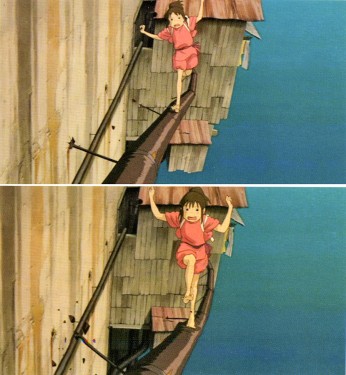 Stylization, the ready answer, or excuse, for Japanese animators’ cavalier handling of their characters, doesn’t really serve in Miyazaki’s case, because he is so good at atmospherics—his settings seem real even when the characters don’t. To the extent that Chihiro, Miyazaki’s ten-year-old protagonist, wins our sympathy, it’s not because the animation brings her to life (except perhaps in fleeting moments when she slips into the paralysis of fear), it’s because Miyazaki places her in an environment as persuasively weird as those in the most obvious of his sources, Lewis Carroll’s Alice in Wonderland and Through the Looking Glass. But how much more powerful the film would be—how much more involving—if Chihiro had been animated so that she were wholly present on the screen . . .
Stylization, the ready answer, or excuse, for Japanese animators’ cavalier handling of their characters, doesn’t really serve in Miyazaki’s case, because he is so good at atmospherics—his settings seem real even when the characters don’t. To the extent that Chihiro, Miyazaki’s ten-year-old protagonist, wins our sympathy, it’s not because the animation brings her to life (except perhaps in fleeting moments when she slips into the paralysis of fear), it’s because Miyazaki places her in an environment as persuasively weird as those in the most obvious of his sources, Lewis Carroll’s Alice in Wonderland and Through the Looking Glass. But how much more powerful the film would be—how much more involving—if Chihiro had been animated so that she were wholly present on the screen . . .Mike is definitely right. The animation of the early, pre-Brad Bird Pixar films is not quite sophisticated enough to take control of the well performed celebrity voices that dominate the characters. (Bird, I think, was able to coax bits of fine original animation out of the animators and the complex system of cgi animation.) Likewise, through Spirited Away, I see a simplicity in the animation of the characters. However, it is with this film that I believe some real animation starts to enter the Miyazaki films. The scene where Chihiro crosses a treacherous metal pipe outside the bath house. The character makes a strong change in personality with this animation, and it has to be taken note that this is not in the voice over but in the artwork. Miyazaki made the choice to change the personality here against the arguments of his animation director, and we can see that the character development has clearly stepped into the studio’s animation, no matter how slowly. From this point forward, Chahiro has a marked change in her character.
Yes, as Mike suggests, the atmospherics have strongly supported the obvious animation, up to this point, but I believe something stronger is entering the films.
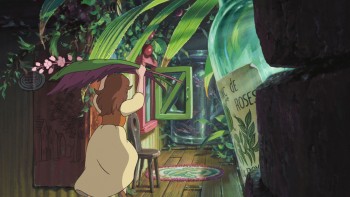 This to me is quite clear in seeing The Secret World of Arrietty. Things have taken an enormous leap, and some of the animation is very personable, completely without artifice and wholly based on human action and interaction. Certainly, it still has many wooden scenes, but there is enough original work in there, that I have to have enormous pleasure in witnessing real 2D animation making its presence felt. This non-generic animation is hard to find in western work, and that’s almost inexplicable to me.
This to me is quite clear in seeing The Secret World of Arrietty. Things have taken an enormous leap, and some of the animation is very personable, completely without artifice and wholly based on human action and interaction. Certainly, it still has many wooden scenes, but there is enough original work in there, that I have to have enormous pleasure in witnessing real 2D animation making its presence felt. This non-generic animation is hard to find in western work, and that’s almost inexplicable to me.
Mike Barrier in his commentary article on Disney’s Tangled has different thoughts about cgi animation. I have to say I don’t quite agree with him on this film, but I understand what he has to say.
- Where CGI is concerned, it seems to me that a complete naturalness in the characters’ movements, like that in parts of Tangled, does not limit the animators to a deadening literalness. Instead, it creates the potential for more subtle and expressive animation of a distinctly non-literal kind, just as the Disney animators’ growing mastery of hand-drawn animation in the 1930s meant that cartoon characters like the Seven Dwarfs could be more insistently present on the screen than characters that were drawn with superficially greater realism.
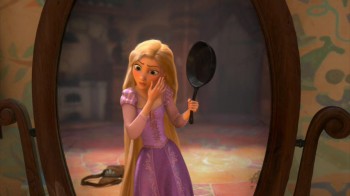 Where Mike sees glimmers of a reality in the animation, I see it all ripped away by generic popping movements, oftentimes covered with blurred motions. What you get are the slow moving gestures immediately followed by popping cartoon-like actions. This goes for both Rapunzel and her Prince. The end result is that their motions, to me, are identical, and there is no personality shining through beyond the voice acting (which I don’t think is great. Mandy Moore couldn’t be more generic.) The realistic movements, to me, are with the witch/stepmother. Here, Donna Murphy‘s voice over has a lot to do with the character, but I don’t discount what the character, herself, is doing in the animation.
Where Mike sees glimmers of a reality in the animation, I see it all ripped away by generic popping movements, oftentimes covered with blurred motions. What you get are the slow moving gestures immediately followed by popping cartoon-like actions. This goes for both Rapunzel and her Prince. The end result is that their motions, to me, are identical, and there is no personality shining through beyond the voice acting (which I don’t think is great. Mandy Moore couldn’t be more generic.) The realistic movements, to me, are with the witch/stepmother. Here, Donna Murphy‘s voice over has a lot to do with the character, but I don’t discount what the character, herself, is doing in the animation.
In short, I have to say that there’s a veritable treasure trove of material on Mike Barrier‘s site. Dig in and take a look at some of these articles. His is a singular, articulate voice, and there’re books worth of ideas and living commentary on this site. And it’s all for free. but then if you really love animation, you already know this.
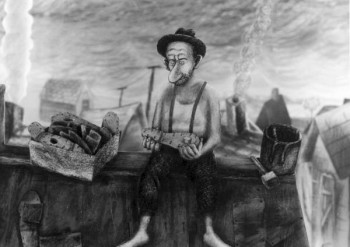 - I’m pleased to see that Ian Lumsden has returned to posting more videos on his blog, The Animation Blog. Ian’s taste is quite fine, and the work posted is always of a generally high caliber. Recently he posted Eugene Federenko and Rose Newlove‘s beauty of a film, The Village Idiots. Federenko is an artist of the most devoted kind, and to watch his films is always my pleasure. Believe me, I’ve seen many of them MANY times, and the welcome doesn’t wear thin for me.
- I’m pleased to see that Ian Lumsden has returned to posting more videos on his blog, The Animation Blog. Ian’s taste is quite fine, and the work posted is always of a generally high caliber. Recently he posted Eugene Federenko and Rose Newlove‘s beauty of a film, The Village Idiots. Federenko is an artist of the most devoted kind, and to watch his films is always my pleasure. Believe me, I’ve seen many of them MANY times, and the welcome doesn’t wear thin for me.
Such films as Mr. Federenko’s makes me long for the National Film Board of even fifteen years ago when capital was a little more available, and the beautiful films
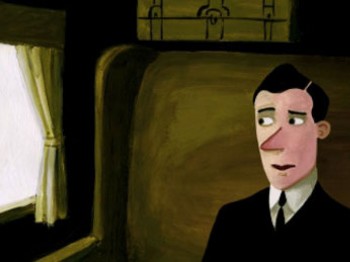 were plentiful. (I’m grateful for any short they’re still making and I wait for them at Festivals and Academy runoffs. This year’s Wild Life by Wendy Tilby and Amanda Forbis and Dimanche by Patrick Doyon were both superb gems, and those filmmakers deserved the high praise they received in being nominated for the Oscar. I’d hoped for Wild Life to win, but am pleased they got as far as they did. It’s story is the best of those that were in the running.)
were plentiful. (I’m grateful for any short they’re still making and I wait for them at Festivals and Academy runoffs. This year’s Wild Life by Wendy Tilby and Amanda Forbis and Dimanche by Patrick Doyon were both superb gems, and those filmmakers deserved the high praise they received in being nominated for the Oscar. I’d hoped for Wild Life to win, but am pleased they got as far as they did. It’s story is the best of those that were in the running.)
- The Oscars came and went, and neither of my animation choices won, though I’m not ocmpletely dissatisfied with Rango‘s win. At least it was the more eccentric of the cgi films.
As for The Fantastic Flying Books of Mr. Morris Lessmore, I find the film completely opaque. It’s obviously and attractive and seems to think it’s about something, but I’ll be damned if I can understand it. Except that the guy likes books and doles them out from his ersatz library in the middle of nowhereland. Oh yes, he’s lonely. All he has is a Humpty Dumpty animated illustration book to keep him in good company.
This is one of those design-y stories where everything is built around conceit, and the audience is fed schmaltz about nothing. It’s a poor meal to swallow.
A film like Wild Life is about many things and told its story beautifully, graphically and was well animated.
Just the same, congratulations to William Joyce and Brandon Oldenburg
I’m pleased that they’re onto other projects at Moonbot Studio.
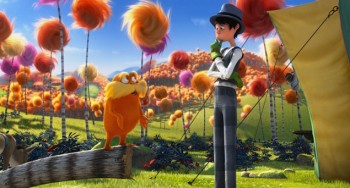 - Of the local critics, AO Scott of the NYTimes was particularly harsh on THE LORAX
- Of the local critics, AO Scott of the NYTimes was particularly harsh on THE LORAX
- Don’t be fooled. Despite its soft environmentalist message “The Lorax†is an example of what it pretends to oppose. Its relationship to Dr. Seuss’s book is precisely that of the synthetic trees that line the streets of Thneedville to the organic Truffulas they have displaced. The movie is a noisy, useless piece of junk, reverse-engineered into something resembling popular art in accordance with the reigning imperatives of marketing and brand extension.
and then later in the review . . .
- In the film as in the book, the Once-ler ravages the landscape and destroys the Truffula trees to manufacture thneeds, knitted garments that have multiple uses but no real utility. Demand for them is insatiable for a while, and then, once the trees are gone, the thneeds are forgotten, partly because nobody really needed them in the first place. There is an obvious metaphor here, but the movie is blind to it, and to everything else that is interesting or true in the story it tries to tell.
It sounds like the trailer I saw for the film, as I waited patiently through many animated junk trailers, on the way to see The Secret World of Arrietty in a theater. The film screens for Academy members on this upcoming Thursday. Maybe I’ll muster the courage to sit through it.
But then, Eliabeth Weitzman in the NYDaily News seemed to enjoy the film calling it, “A Tree-mendous Animated Movie.”
- While softening Geisel’s darker themes, they still meld a valuable message into catchy songs, bright images (nicely done in 3D) and funny characters.
- Even adults are likely to walk out wondering how our own society has strayed so far from any sensible path … before hopping into their Lorax-approved Mazda and heading to IHOP for some Truffula Chip pancakes.
And, finally, the NYPost‘s Kyle Smith is merciless:
- I am the critic, I speak to displease:
“The Lorax†is awful, like chronic disease.
There’s no fun in “The Lorax,†no joy in its theme;
It’s as boring as sales tax.
I’m ready to ream.
Animation &Commentary 24 Feb 2012 07:51 am
Pops and Smears
- In reviewing The Secret World of Arrietty, the brilliant new Ghibli film, I wrote about the fluidity of their animation and its basis in a real rather, than a cartoon world. Unfortunately, most of the animation done in features coming from the Western world (specifically the US world) is done in a cartoon way using pops and smears. This affect creates cartoon characters and clichéd ones at that. It’s not a type of animation I love for feature films.
Of course, if you’re designing an Aladdin, where the Robins Williams/Eric Goldberg Genie is a hyper cartoon character, that’s the only way to go – stylized cartoon. That was its natural design. But for 101 Dalmatians/Peter Pan/Beauty and the Beast – no. That’s not what you should be doing. However, it seems to be the only way to go in the films coming out of Hollywood.
I thought, over the course of a couple of posts, I’d give a couple of good examples of these pops and smears I’ve been bothered with in the recent past. Let’s start with “smears” 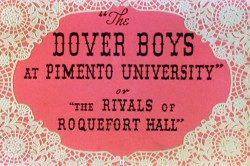 something I find particularly egregious in animation pretending to create a “real” world.
something I find particularly egregious in animation pretending to create a “real” world.
To show what I’m talking about, here’s an example from the first real – and I might say brilliant – use of this technique.
Animator, Bobe Cannon, together with director, Chuck Jones, came up with the technique for the outstanding Dover Boys film.
Here’s our villain, the main target of the smeared frames:
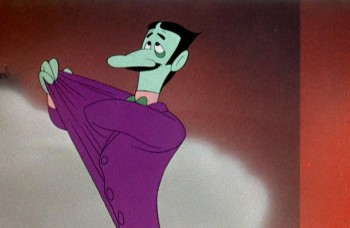 1
1It’s the villain that moves in exaggerated smears.
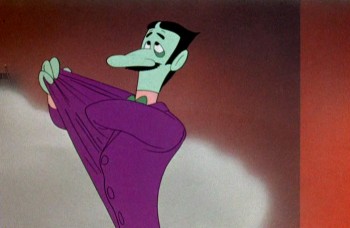 2
2
He moves slowly at start and stop of moves.
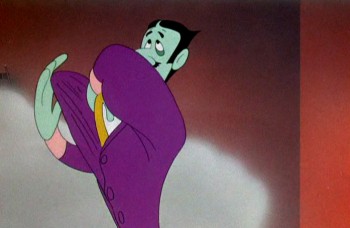 3
3
But moves wildly in between phrases of dialogue.
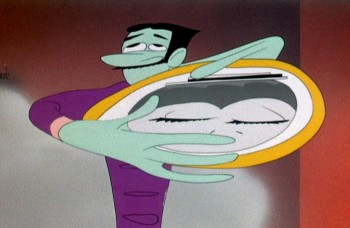 4
4
The middle poses couldn’t be wilder or faster.
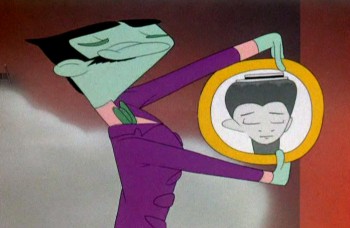 5
5
And comes to quick halting stops with small patches of dialogue.
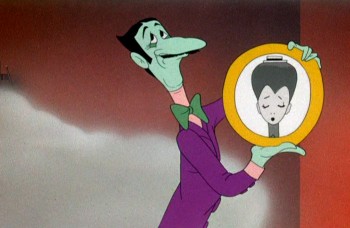 7
7
Then, if anything, we’re going wilder.
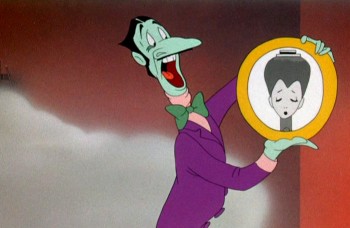 8
8
Slowly out of quiet hard pose . . .
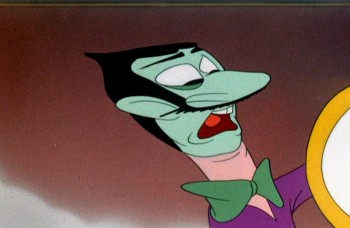 9
9
WILD as Jones backs the animation move with a tighter cut . . .
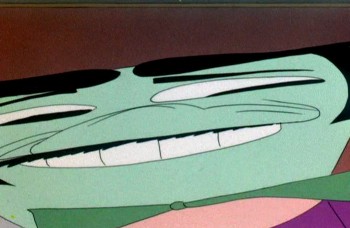 10
10
. . . and a wild camera move.
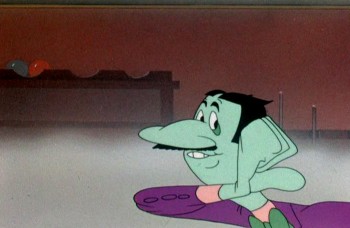 14
14
Come down to another solid, hard pose and move dialogue.
Here’s a later sequence as the villain kidnaps our heroine.
All cartoon, all comedy, all arch, all on purpose.

He moves wildly via smears inbetween phrases of dialogue.

Line of dialogue – move – dialogue – move.

Every action comes off the exaggerated speech by the arch ( and I do mean arch) villain.
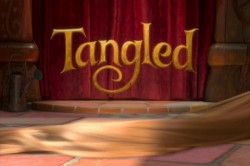 Tangled is a tangled version of the brilliant fairy tale, Rapunzel. The makers have completely distorted the tale to a mish-mash point where it makes no sense, but that’s irrelevant to this post. What is relevant is that they continually rob the characters of a reality by pushing, rubbing and smearing them throughout.
Tangled is a tangled version of the brilliant fairy tale, Rapunzel. The makers have completely distorted the tale to a mish-mash point where it makes no sense, but that’s irrelevant to this post. What is relevant is that they continually rob the characters of a reality by pushing, rubbing and smearing them throughout.
The first example of this technique shows up as Rapunzel opens her window. Technically, you start slow, you compress the middle to one or two images, and you slow out over a long beat. The inbetween chart would look something like this:

Here’s Rapunzel opening her window:
It’s not really a human motion; it’s a cartoon motion. But it’s subtle enough this first time, that we can get away with it. Let’s just call it fast. However, too often the animation falls into this mode, and by midway through the film, there are no real characters left; just cartoon characters.
I take that back. Mother Goethels is always true to a human animation style. She is a real character, and Donna Murphy’s performance grounds it behind the fine animation by Jamaal Bradley, Nik Ranieri and others.
The most egregious in using these smears is the horse character, but if it were only that one, it would work. The horse is a stand-alone. It’s personality IS a cartoon. The horse, after all, isn’t a horse in this film. It’s shaped like another Disney horse, but it moves more like a dog. And it’s ALL pops and smears.
Look at these frames of it getting up from the ground, lickety-split:
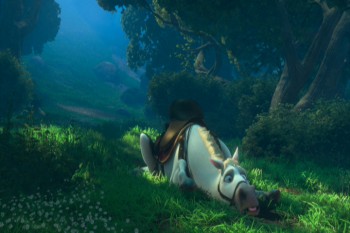 1
1
The move above is funny, not based in reality. What we have is a cartoon horse. This is not the horse Prince Phillip rides in Sleeping Beauty. It’s not even a good caricature of it.
The unfortunate part is that what Bobe Cannon did in the Dover Boys can’t easily be done in cgi. The Dover Bioys employed the brilliant cartooning of Cannon; cgi is really just a playing with computerized puppetry. You can stretch and squash somewhat, but distorting as desired isn’t always possible. So they stretch and squash and do very fast motions and hide it all under a veneer of out-of-focus. It ends up looking like just fast motion and not a true distortion – as they probably desired. The best you can hope for is image #3 just above. Now compare that to image #10 in the Dover Boys group. Not quite the same are they.
God forbid someone in cgi wants to do what Jim Tyer did. It’s impossible.
Here’s one last horse. We start rock steady – then zip, blur, stream. Ease in and race back out – zip, blur, stream. To be honest, I’m not sure what’s even happening in this scene (the horse is somehow changing into rock and vegetation?), but I let it go past as cartoon.
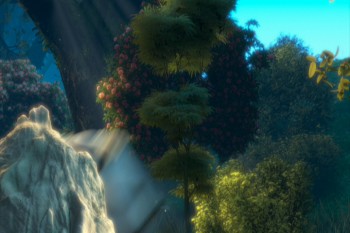 1
1
To sum up what I’m trying to say. Animated features have sunk their heads into the ground. Everything has become arch and stupid. We’re not trying to develop characters but, instead, trying to do some wild movement. Movement that has nothing to do with character development. That’s a problem, if you ask me.
If you want to imitate Tex Avery or Bob Clampett, fine. If you want a seriously developed non-cartoon character, then stay away from pops and smears. It works for Aladdin, but it also limits feature films. I think Tangled is a good example of that. Outside of a few characters, I see little believable animation there. It’s all just tricks and stunts that pulls away from true, honest animation. It’s a comment on a character rather than a development of the character.
Of course, that’s my opinion. It’s so obvious to me when you see a Ghibli product like The Secret World of Arrietty or anything Mayazaki does. Their animation grows more and more subtle while Hollywood moves in the opposite direction – gags and clichéd actions. I don’t understand why Disney product approves of this. Thank god for animators like Andreas Deja who refuses to go this route, and is in absolute control of the characters he animates. There are others like him, and I applaud those artists. I wish they were all of that shape and belief.
Animation &Commentary &Disney 30 Nov 2010 08:26 am
Keane Posing
- Before posting this, let me tell you that I have all the respect in the world for Glen Keane. He’s one of the finest animators out there who consistently does original animation.
 Last night I saw Tangled at a screening in 2D. I would have liked to have seen it in 3D, though EVERY review I’ve seen has put down the 3D experience saying that the glasses darken the movie to less than 60% of the brilliance on film. I doubt I’ll see it again for the 3D; if I do see it again it’ll be on DVD.
Last night I saw Tangled at a screening in 2D. I would have liked to have seen it in 3D, though EVERY review I’ve seen has put down the 3D experience saying that the glasses darken the movie to less than 60% of the brilliance on film. I doubt I’ll see it again for the 3D; if I do see it again it’ll be on DVD.
The history of the Disney studio. The film, itself, is basically a reworking of Beauty and the Beast (the magic flower, the bad male who has to be transformed into a good guy), Snow White (the wicked queen and the magic mirrors – two of them have to be broken), Cinderella (she cleans the tower for her wicked stepmother – or is this more of Snow White?), Sleeping Beauty (the horse with his own mind, the Princess awakens the sleeping Prince – or is this Snow White again?), The Little Mermaid (She looks like Ariel, the Little Mermaid with the hair that she just has to keep pushing back), Tarzan (the two lead characters skateboard over water and some paving, yet they don’t have skateboards). I could go on through some other films, but what’s the point?
Several of these female characters showed their spunk and advanced their Independence. In Tangled, Rapunzel goes after what she wants but doesn’t create her own fate, in the end. The male does. One expected it would be the wicked stepmother, but no, it’s the Prince … er Robber/Thief/Scoundrel. Inadequate. This is a film for 14 year old girls, and we see that they’ve seen it this past weekend, but they’re given the wrong version of the story.
The story in Tangled is smooth flowing, but crudely formed. It’s a mass of unbelievable material that rips apart one of the darker and great stories from the Brothers Grimm first published in 1812. The story is a nasty one which begins with a king, personally, stealing a plant from the witch’s garden to help his wife. She catches him on the spot and makes him promise his first born in payment.The king is RESPONSIBLE for his theft. Rapunzel moves to the tower and is protected from sex with her caging in the tower.
The film doesn’t use the hair very well. It is the sex that isn’t otherwise stated, and some symbolism should have entered the animation; it didn’t have to be obvious – it just had to be there. The incidental characters – all male seem to have bonded well, but we have no idea who they are or what their sexual preferences are. Again, the film seems unwilling to deal with the main subject of this great fairy tale. A stepmother trying to protect her daughter from the evils of the world. (Men!) Instead, this film is about ripping off Disney past. Yet we did see in Jeff Kurti‘s book on The Art of . . . that Rembrant was a major source of inspiration in the earlier days. Too bad too little of Rembrandt made it to the screen.
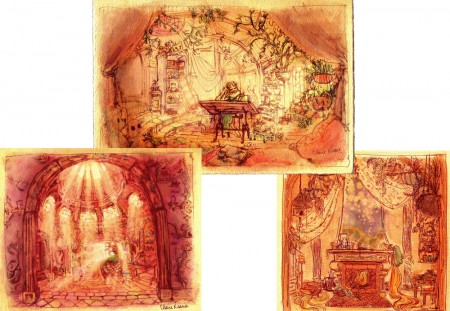
Just prior to going to this screening, I watched the first half of Tarzan on tv. Below, I’m going to post a number of drawings showing some clichéd poses by Glen Keane, but these poses don’t represent the animation he does on screen. He’s too good and sensitive an animator to show any clichés in the actual animation on screen. In fact, some of what he does is quite inspired. (Not the idea of Tarzan skateboarding through the trees without a skateboard. I expect the soles of his feet would be bloodied and damaged after trying it once, and I don’t think there’s scar tissue for it. It’s a small reality issue for me.) It’s just that these model sheet poses inspire clichés from lesser animators when they’re the poses.
Tangled is totally watchable (despite a couple of children running around the screening room, bored and loud). It’s just not good; story is everything.
Here are a bunch of drawings I culled from Raul Andres‘ blog, The Art of Glen Keane. I have to admit my purpose isn’t to showcase the art of Mr. Keane, but to express my disappointment with what I’ve found. It first became obvious to me with many of the drawings and models of his that were printed in the book, The Art of Tangled. Many of the poses he’s done since Beauty and the Beast have gone to the clichéd pose, and it’s disconcerting to me. Characters look like each other, and their facial postitions repeat the past. It’s a laziness in the drawing.
Look and compare drawings with this small sample. It took only minutes for me to compile them, and I could easily have kept going.
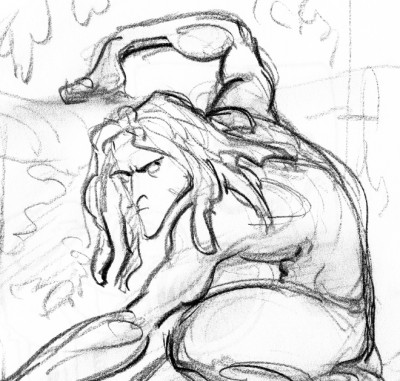
Tarzan 1
The problem, to me, is that Glen Keane has grown into this phase of reworking the same godawful poses. He has to come to grips with what he’s doing, and pay more attention it. There’s no excuse. It isn’t so obvious in his animation, just in his model sheets.
You wouldn’t be able to catch two poses from Frank Thomas, Milt Kahl or Ward Kimball that were so alike. There were no obvious clichés in their work.
Glen Keane is a remarkable artist and a brilliant animator. That is exactly why I have to take notice. There are many others aping what he’s doing in animation, and the kingdom is beset with endless clichéd poses. Let’s get it together, folks. Time to bring animation to a higher level.
Attitude has got to be a thing of the past. It’s rampant in Tangled, Toy Story 3 and to a lesser degree in Kung Fu Panda; it’s not obvious in How To Train Your Dragon. The independent films, The Illusionist and My Dog Tulip don’t settle into this type of posing. Strong, clear thinking artists dominate these two films.
Commentary &Disney 16 Nov 2010 08:37 am
Tangled, indeed

- Like many others, I received a copy of Jeff Kurtti‘s book, The Art of Tangled.
 I’m glad I did. It shows me that there was once a soul behind the new Disney feature, Tangled.
I’m glad I did. It shows me that there was once a soul behind the new Disney feature, Tangled.
I have to admit to something unorthodox here. I haven’t seen this Disney film. I will see it Dec 2nd though it’s going to be a hard pull for me to go there. Yet I still have some commentary – just on all the clips I’ve seen. THere have been about seven minutes of them and none of them pretty.
Because Glen Keane was so intimately involved in the first years of this film, I was more than a little curious to see it. But, to quote Joseph Heller, “something happened”. Keane left the film as director and became an animation advisor – not even animating. The book says he had a “health attack”. The direction, thanks to the sanction of John Lasseter, went to the two responsible for the final version of Bolt, Byron Howard and Nathan Greno.
I’ve seen the clips, let me tell you I’ve seen clips. I’ve read reviews. The Variety review couldn’t be worse. (Quotes: “If the film is hardly one for the pantheon, that’s because it seems more interested in tossing off one-liners than in tapping into its heroine’s deepest desires in the tradition of the best fairy tales.”
“. . . there’s room for visual improvement, particularly a garish, unattractive underwater scene involving Rapunzel’s hair (which often resembles a very long coil of spaghetti, extra al dente). The dimming effect of the 3D eye-wear seemed especially detrimental at the screening attended, draining too much color and light from the image and causing skin tones to appear weirdly pixelated . . .”)
What we’ve seen in the clips is a macho tough guy relationship between the Prince/the thief/whatever he is and his horse. They constantly jab each other and play off each other in that sarcastic and smarmy way Dreamworks characters act. The horse doesn’t talk, but it may as well. He keeps elbowing the hero. (If only a horse had elbows.)
Originally, the story was called Rapunzel. That’s when the Brothers Grimm had something to do with it. Now the bright folk at Disney have taken a great and complex story and have turned it inside-out making the male the lead. You can’t call it Rapunzel anymore, hence the title, Tangled. All the timely gags, all the smart aleck comments make it seem ever more like a Dreamworks production. The film is dated before it’s released.
And it looks so ordinary, it’s annoying. Maybe they should have called it Megamind and changed the horse’s color to blue. He could have come from outer space to harness Rapunzel’s hair. The Variety review does say that the film settles down midway to just concentrate on the fariy tale story. That I’ll have to witness for myself.
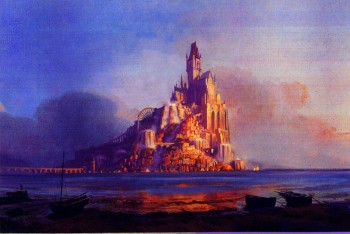 All this would be only so depressing, if we hadn’t seen the artwork in the book, The Art of Tangled. There’s some amazing art in that book, and very little of it seems to be cgi. Plenty of animation drawings and models by Glen Keane give an indication of what the characters could have looked like. Then those background paintings. Yes, some of them look like Eyvind Earle clones, but
All this would be only so depressing, if we hadn’t seen the artwork in the book, The Art of Tangled. There’s some amazing art in that book, and very little of it seems to be cgi. Plenty of animation drawings and models by Glen Keane give an indication of what the characters could have looked like. Then those background paintings. Yes, some of them look like Eyvind Earle clones, but
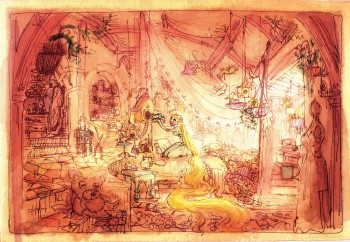 others look like they were watercolors painted by Rembrandt. They’re stunning.
others look like they were watercolors painted by Rembrandt. They’re stunning.
You go through beautiful background after beautiful background, and the end result is the ordinary and dull thing they’ve put on the screen. Who’s responsible? Lasseter? Byron Howard and Nathan Greno? Glen Keane? – no, he seems to have been the guy who got the big shaft.
What a sell out, Mr. Lasseter! How sad I feel about the Disney organization. They can’t do ANYTHING with artistic merit. It’s so obvious they were going down that road, and things were stopped, pulled, and tangled.
They’ll probably get their 12 year old girl audience, and the film will go the way of the Bolts and the Treasure Planets and the Meet the Robinsons.
Here are some of the pretty pictures in the book. These don’t look inspired by other animated films, although the film certainly takes its look from earlier films.
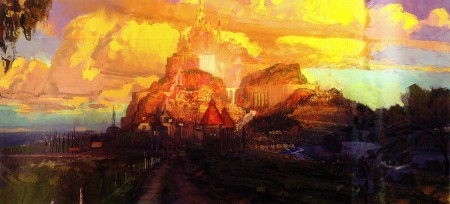
So here’s an Art of book that seems to matter. It shows us what we’ll never see. Glen Keane may have left the directing with a “health attack” (as Jeff Kurtti informs us), but he won’t say a bad word about the company or what followed. He’s a positive guy, well invested in the organization. I just wish some of what was in his mind actually made it to the screen. Perhaps that won’t happen again now that Disney isn’t invested in their 2D division. I can’t imagine Glen Keane has animated anything on the Winnie the Pooh film.
The pictures above were drawn/painted by:
cover: Glean Keane, graphit | Ian Gooding, digital painting
tower: Douglas Rogers, digital painting
island: David Goetz, digital painting
Rembrandt sketch: Claire Keane, digital painting
island: Craig Mullins, digital painting
Rembrandt sketches: Claire Keane, digital painting
2 character models: Glen Keane, graphite
towers: Andy Gaskill, graphite | Douglas Rogers, graphite
girl in town: Craig Mullins, digital painting
Commentary &Daily post 19 Oct 2010 08:16 am
Little Bits
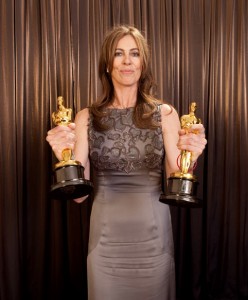 - There’s a breaking story on Cartoon Brew about Brenda Chapman and her short tenure at Pixar as director of The Brave (recently retitled from The Bear and the Bow.)
- There’s a breaking story on Cartoon Brew about Brenda Chapman and her short tenure at Pixar as director of The Brave (recently retitled from The Bear and the Bow.)
It’s obvious to me the once John Lasseter was put in charge of both Disney and Pixar studios, his head turned inside out. The first thing to happen was that directors were fired from Bolt (American Dog), Tangled (Rapunzel) and he had strong influence over Stephen J. Anderson on Meet the Robinsons, changing much of what had already been done (possibly for the better.)
Now the sword is attacking at Pixar and the victim is a woman, Brenda Chapman, who has already put together an amazing career and certainly deserves to be a director in the industry. There’s unrest in the Magic Kingdom, and we’ll have to watch Lasseter’s moves closely since it’s obvious that he’s getting heat. His recent history would show that he doesn’t seem to be taking it too well. Or at least his slate of directors isn’t receiving it well.
Even more alarming are the anti-woman comments left on Cartoon Brew. When one blogger writes, “…And I’ll be honest with one exception, Julie Taymor, I haven’t been blown away by most films directed by women and honestly neither has most of America …” You can see the level of negativity women have to take to get ahead in the business or, at the least, be treated equally with men. It’s no wonder they were relegated to the Ink & Paint department; many of these bloggers seem to agree with that. I felt embarrassment in reading many of the heartless comments.
Did we forget already that the Oscar last year was won by a woman, Katheryn Bigelow? And her film was chosen as the year’s best movie! The Oscars are not my code for judging the best films, but it certainly qualifies as, at least, a small statement about female artists.
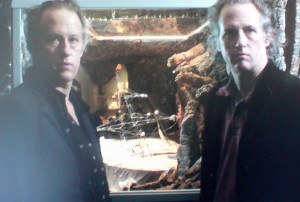 - The NY Times had an interesting article about the Quay Brothers in a recent edition of their paper.
- The NY Times had an interesting article about the Quay Brothers in a recent edition of their paper.
The article is about a short film the brothers are making which will be screened at a retrospective to appear in symposia at the Mütter Museum, a 19th-century repository of curiosa at the College of Physicians of Philadelphia, and following that at the Museum of Modern Art in New York and at the LA Museum of Jurassic Technology.
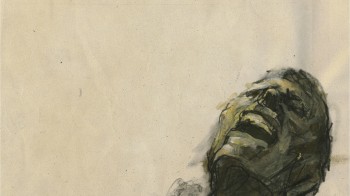 - Get Animated! is a Canada-wide series of free screenings, master classes and activities marking International Animation Day.
- Get Animated! is a Canada-wide series of free screenings, master classes and activities marking International Animation Day.
Watch the Natinal Film Board’s latest animated films on the big screen for free and attend special presentations with acclaimed directors from your area.
This year’s program:
Animation Screenings: NFB New Releases
Family Program Screenings: Fairy Tales for All
And meet the directors…
Come see Andrea Dorfman (Flawed) in Halifax, Chris Lavis with Maciek Szczerbowski (Higglety Pigglety Pop! or There Must Be More to Life) and Theodore Ushev with Chris Robinson (Lipsett Diaries) in Montreal, Anita Lebeau (Louise, Big Drive) in Winnipeg, Cam Christiansen (The Real Place) in Calgary and Matthew Talbot-Kelly (The Trembling Veil of Bones) in Vancouver. Plus, view the Hothouse 6 series in 3D in Toronto!
Go here to see clips of some of the films to be screened.
- To celebrate Interanational Animation Day, the NY chapter of ASIFA, ASIFAEast, will have a screening of films on Oct 26th.
Admission: FREE!
Details of the films that’ll be screened will be coming soon.
SVA
School Of Visual Arts
209 East 23rd Street
(Bet. 2nd & 3rd Ave)
3rd Fl, Amphitheater
NYC
Illustration &Trnka 30 May 2009 08:24 am
Trnka’s Grimm
- Jiri Trnka is one of my heroes. His sense of design is as gorgeous as his puppets. There’s a feminine delicacy wrapped around a very masculine strength. The same is true of his puppet films. Look at any frame of The Archangel Gabriel or Midsummer Night’s Dream.
We don’t often see Trnka’s illustrations, so I’ve decided, for my own entertainment, to post a few of those in the Grimm’s Fairy Tales book. You can still find copies of this republished many times over. (I suspect the manuscript and illustrations are in public domain.)
Here are about half of the book’s illustrations:
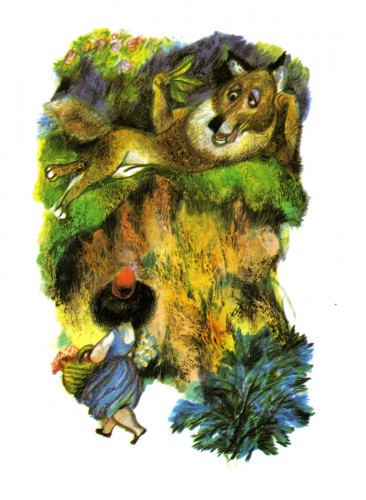
Red Riding Hood
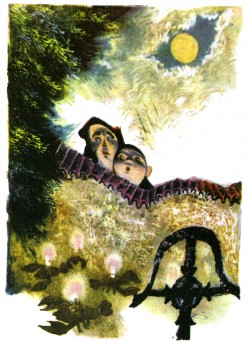
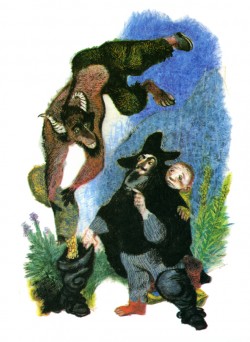
The Master Thief | The Grave Mound
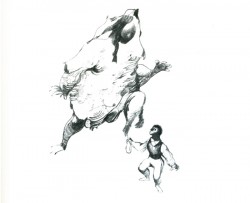
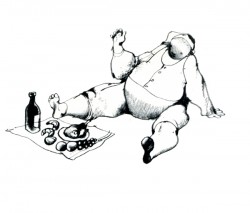
The Spirit in the Bottle | The Wishing Table, the Gold Ass & the Cudgel
Daily post &Disney 11 Oct 2008 08:32 am
Bashir’s Oscar, Mickey’s voice
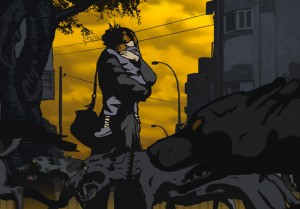 Ari Folman’s Waltz With Bashir has been submitted by Israel as its contender for the foreign-language Oscar.
Ari Folman’s Waltz With Bashir has been submitted by Israel as its contender for the foreign-language Oscar.
The film is also eligible for animated feature, but not for documentary. As reported in Variety, the film has instigated some complaints to the Academy over their documentary rules. Currently, a doc has to perform in NYC for a week prior to Aug. 31st to be eligible. If Sony Pictures Classics had followed this rule to qualify, the film could not have participated in the NY Film Festival.
A host of executives and festival veterans are calling on the Academy of Motion Picture Arts and Sciences to revise the rule. However, if the Academy does agree to change the rule, it wouldn’t help Bashir since the revised rule wouldn’t go into effect until 2009.
The film uses hand-drawn animation to illustrate Folman’s interviews with participants of the 1980s Lebanese war, including the massacre of Palestinian civilians. It was done, primarily, in Flash, and moves pretty stiffly. In fairness, I have to say I wasn’t overwhelmed by the film, so I suspect it’s not a challenge to either Religulous or Wall-E (not that I can say I liked either of those).
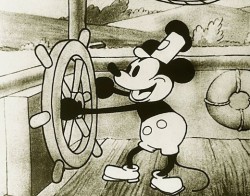 -Tuesday, September 30th marked the 80th anniversary of Mickey Mouse’s big sound recording. It was the second session that took three hours and ended brilliantly.
-Tuesday, September 30th marked the 80th anniversary of Mickey Mouse’s big sound recording. It was the second session that took three hours and ended brilliantly.
The film didn’t debut until November 18th when it opened at the Colony Theater in NYC. This theater was enormous, similar to Radio City Music Hall or the Roxy. There was a stageshow with the feature film as well as numerous shorts. In 1928, the Mickey Mouse cartoon was a hit – audiences demanded the cartoon be shown more than once on the program.
This small landmark passed virtually unnoticed, even on the blogosphere. The only site I know that mentioned it was Joe Campana‘s Animation Who & Where.
Perhaps things will be different for the November anniversary of it’s theatrical debut. I vividly remember the 50th Anniversary when they screened Steamboat Willie again at the Colony (now the Broadway Theater)for some invited guests and a bunch of stragglers, myself included. Of course, two other shorts were released earlier that same year in their silent version: Plane Crazy and Gallopin’ Gauchos.
- Speaking of Mickey Mouse, much has been made of the demotion of Glen Keane from director of Rapunzel to Directing Animator. The Cartoon Brew piece has generated quite a few comments and most of them bemoan the action taken by producers Lasseter and Catmull on the upcoming feature (projected release 2010). Keane has been involved as director for the past seven years.
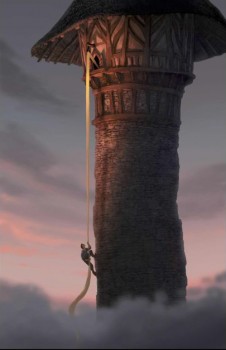 My view is a bit different (and of course I have no information other than my own guesswork to go on) on the situation. Consequently, if anyone has a more informed psition, plese let me hear it.
My view is a bit different (and of course I have no information other than my own guesswork to go on) on the situation. Consequently, if anyone has a more informed psition, plese let me hear it.
I think that Disney has never treated directors of their animation features as any more than glorified production coordinators. They work incredibly hard to keep the people below them happy while at the same time trying to satisfy the wishes and needs of those above them. There are a lot of people above them these days. It becomes a position of controlling traffic and keeping the ship sailing fluidly. It’s not about opinion.
Certainly, directors have their say and their influence, but the Animation Directors have always dominated at Disney. You can’t tell me that Woolie Reitherman won many arguments directing Milt Kahl on any of the films – or Frank Thomas, or Marc Davis. These guys worked together intimately, but Fred Moore or Ward Kimball or Bill Tytla had their say, and Ben Sharpsteen or David Hand kept them happy while making sure Walt was happy.
This was very much unlike the situation at WB where a Chuck Jones or Bob Clampett ruled and was the most heard voice in the production. Animators, there, were certainly subservient to the directors.
Undoubtedly, this had to do with the budget of the WB cartoons over the Disney product. The single voice of the WB films dominated because they had to control every penny – it was too tight. Action, cutting, layout, even writing were subject to the budget, and the directors made sure they came in on that budget.
At Disney’s this became the rule in many of the later shorts, such as Toot Whistle Plunk and Boom where the director like Ward Kimball and the budget dominated, but, for the most part, the animators ruled at Disney.
Glen Keane’s move back to animation – excuse me, Directing Animator – is, in my eyes, a promotion. Lasseter and Catmull had to bring out the real Glen Keane while getting the production moving. (There also seems to be more involved than we’ve heard. Ed Catmull reports that Keane had to “attend to some non-life threatening health issues.†Of course this doesn’t explain why co-director Dean Wellins “removed himself.”)
Animation Artifacts &Daily post 03 Nov 2006 08:52 am
Norstein & TCM features
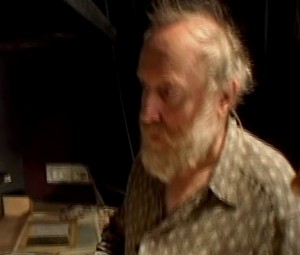 – For those who haven’t seen the Yuri Norstein segment from Winter Days, it has been posted by Daniel Thomas MacInnes at Conversations on Ghibli. Give yourself the two minutes to watch it.
– For those who haven’t seen the Yuri Norstein segment from Winter Days, it has been posted by Daniel Thomas MacInnes at Conversations on Ghibli. Give yourself the two minutes to watch it.
The piece, in a slightly longer version, is on YouTube as well.
There’s a small clip of this work on the Norstein dvd, but watch it in its entirety.
Daniel also posts several other beautiful segments from this amazing film by Kotabe & Okuyama and Takahata here.
- Turner Classic Movies is about to show a couple of animated features on their jam packed schedule for November.
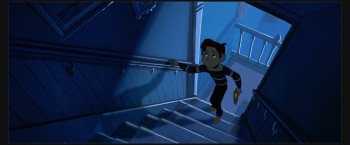 On November 12 at 8:30, they’re screening Brad Bird‘s feature, The Iron Giant. It’ll be nice to see a version of this without endless commercials on television. (Though the DVD release is excellent.)
On November 12 at 8:30, they’re screening Brad Bird‘s feature, The Iron Giant. It’ll be nice to see a version of this without endless commercials on television. (Though the DVD release is excellent.)
On November 12 at 10:00 pm, they’re showing Grave of the Fireflies. For information about this film, I, once again, suggest you go to Conversations on Ghibli.
On November 12 at midnight, Lotte Reineger‘s The Adventures of Prince Achmed will screen. This is the first animated feature, a silent film made in 1927, and if you haven’t seen it at least once, watch it, tivo it or tape it.
Look out for November 12th.
- TCM also continues with the Cartoon Alley series on Saturdays:
Nov 4th at 11:30 AM: Features three Tex Avery George and Junior Cartoons:
Henpecked Hoboes (1946), Hound Hunters (1947) and Half-Pint Pygmy (1948).
Nov 11th at 11:30 AM: Features three WB Bugs Bunny Cartoons:
A Wild Hare (1940), Elmer’s Pet Rabbit (1941) and Hiawatha’s Rabbit Hunt (1941).
Nov 18th at 11:30 AM:: Features three MGM Spike Cartoons:
Counterfeit Cat (1949), Ventriloquist Cat (1950) and Garden Gopher (1950).
(This is repeated Tuesday Nov. 21st at 6AM.)
Nov 25th at 11:30 AM: Features three WB Bugs Bunny/Cecil Turtle Cartoons:
Tortoise Beats Hare (1941), Tortoise Wins By a Hare (1943) and Rabbit Transit (1947).
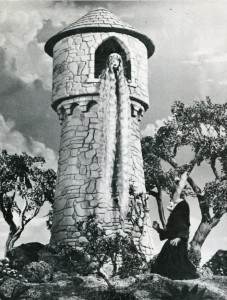 – On Nov 24th, the day after Thanksgiving, Ray Harryhausen is featured. TCM is going to air a number of his fantasy features.
– On Nov 24th, the day after Thanksgiving, Ray Harryhausen is featured. TCM is going to air a number of his fantasy features.
8:00 PM 7th Voyage Of Sinbad, The (1958)
10:00 PM Jason And The Argonauts (1963)
12:00 AM Mysterious Island (1961)
However, the real treat will be the shorts sandwiched in between these features. Harryhausen did a number of fairy tale films that are rarely seen and will certainly be the highlight for the night.
This will be a television premiere that seems to be going unnoticed. Again, get out your Tivos (or in my case tape.)
These can be seen at:
9:45 PM RAPUNZEL (1951)
1:45 AM KING MIDAS (1953)
Flushed Away has opened today. With it there are the reviews. In NYC you get strikingly contrasting views. The NYTimes’ A.O. Scott gives it a glowing review (“…it strikes me as unlikely that any British action picture released this year will surpass “Flushed Away.â€). The NYDaily News’ Jack Matthews is so-so over it. 2½ stars.
I hope Dreamworks makes a bundle and realizes they’ve lost future work with Aardman, an honest and respectable animation studio working with dignity in a world of muck.
